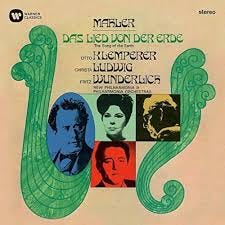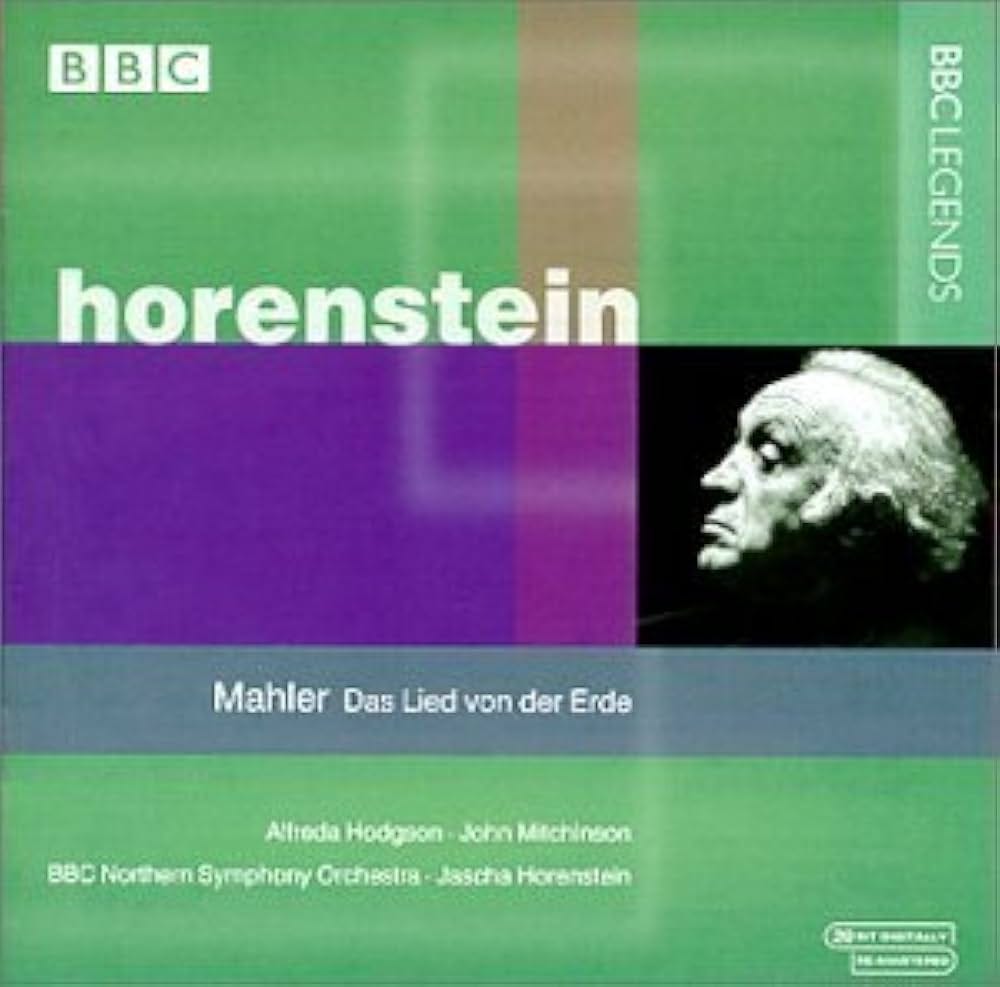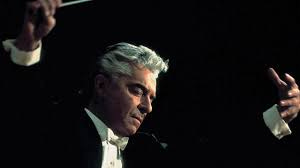Building a Collection #55
Das Lied von der Erde (The Song of the Earth)
By Gustav Mahler
_________________
I am very pleased to welcome all readers to #55 in our Building a Collection series. If you are a new reader, we are on our way to covering all 250 of the greatest classical music compositions of all time. In this spot is Gustav Mahler’s amazing and dramatic song symphony Das Lied von der Erde, one of the most unique and moving works in the entire repertoire.
Gustav Mahler
Gustav Mahler (b. 1860 – d. 1911) was certainly one of the greatest composers of his time, and in the view of many one of the all-time greatest composers. Born in Bohemia (then part of the Austrian empire) to Jewish parents of humble means, Mahler rose to fame as one of the leading conductors of his time. He became known later, and is known today, mostly for his compositions. The reason his music did not become more well-known sooner may be attributed to the fierce anti-Semitism present in late 19th and early 20th century Vienna, the musical capital of the world at the time.
Many other biographical details about Mahler’s life were discussed in a previous post, back at #12 for the recording of Mahler’s Symphony no. 2. In the interest of reducing length, if you are interested in reading more about Mahler, here is the link for that post:
https://classicalguy.substack.com/p/building-a-collection-32-mahlers?r=avz62
Das Lied von der Erde
Mahler’s work Das Lied von der Erde (The Song of the Earth) is an orchestral song cycle written for two voices and orchestra, and was completed between 1908 and 1909. Mahler specified that the two singers should be a tenor and an alto, or else a tenor and a baritone if an alto is not available. One of Mahler’s greatest advocates and renowned composer and conductor Leonard Bernstein called Das Lied von der Erde Mahler’s “greatest symphony”, as it was originally described as a symphony.
Mahler wrote Das Lied von der Erde soon after experiencing three painful losses in his life in 1907. Politics and rising antisemitism forced him to resign as director of the Vienna Court Opera, his daughter Maria died from scarlet fever and diphtheria, and Mahler himself was diagnosed with a serious heart defect. The same year, Mahler read verses from Hans Bethge's Die chinesische Flöte, a rewriting of other writers’ translations of Chinese poems. Mahler was moved by the themes in the poems, and admired how earthly beauty was depicted. He chose seven of them to set to music, and completed the work in 1909. Mahler was well aware that the ninth symphony proved to be a curse for other composers, as no composer since Beethoven had made it past their ninth symphony. Therefore Mahler chose not to number Das Lied, and later he did complete his Ninth Symphony, but only portions of a Tenth Symphony before he died.
Das Lied von der Erde was premiered on November 20, 1911 in Munich with Mahler’s friend Bruno Walter conducting, six months after Mahler had died. The song symphony is rather bleak, even for Mahler, with some profound reflections on life and death and the meaning of mortality. The orchestra only plays together on the first, fourth, and sixth songs, giving the other songs more of a chamber music feel. The movements are as follows:
Das Trinklied vom Jammer der Erde - the movement continually returns to the refrain Dunkel ist das Leben, ist der Tod, which means "Dark is life, is death". Each time the refrain returns it is slightly higher in tone. This is not surprising, given that the original Chinese poem mixes drunken delirium with deep sadness. The tenor sings the song, and it is an impossibly demanding part, as Mahler was fond of pushing musicians and singers to their limit.
Der Einsame im Herbst - “The Lonely one in Autumn” is less assertive than the opening movement. The lyrics speak of the dying of the flowers and how beauty is passing, and there is an exhaustion and longing for sleep expressed. Written for alto voice, this movement has more sparse orchestration and is more chamber-like.
Von der Jugend - “Of Youth” for tenor is relatively short, and is the only movement that we might say sounds “asian” in its form. It also might be considered a scherzo, or a dance-like movement.
Von der Schönheit - “Of Beauty” is soft like a meditation and the image is meant to be "young girls picking lotus flowers at the riverbank." Later young men ride past on horses, as we hear in a louder, brassier passage. The orchestral music we hear after is meant to portray some of the women staring longingly at the handsome men.
Der Trunkene im Frühling - “The Drunken Man in Spring” is a scherzo for tenor, and opens with a horn theme. Mahler changes key signatures frequently in this movement, and a solo violin and solo flute are featured prominently to signify a bird the singer describes.
Der Abschied - “The Farewell” is written for alto, and is the longest movement. Mahler took the lyrics from two poems on the theme of leaving, himself adding the final lines. We hear a mandolin, woodwinds, and again Mahler changes keys from major to minor several times to depict certain feelings. This is the most familiar and popular of the movements. The persistent theme mentioned by Mahler, and that repeats in the song, is the idea that “"The earth will stay beautiful forever, but man cannot live for even a hundred years." This final movement is notoriously difficult to conduct due to the way it is written, and because Mahler specifically instructed it to be played “without regard for the tempo”.
Mahler was hesitant to make the work public, due to his worry it was too negative. “Won’t people go home and shoot themselves?” he said.
The complete lyrics to Das Lied von der Erde can be found here:
https://www.slso.org/globalassets/connect/das-lied-libretto.pdf
A note on performance
Mahler’s music in Das Lied von der Erde is rich, emotional, and poignant. It is also extremely difficult to sing well. Regarding the alto/baritone part, the longest and most well known song is Der Abschied and the success of most recordings depends on it being not only sung well, but also on it being sung so that it breaks our hearts. Ultimately it is about saying goodbye forever, departing from loved ones, and about the fragility of life and inevitability of death. Thus, it has to be sung not only accurately and well but with pathos and poignancy. It is a difficult charge.
The tenor part is quite demanding, especially in the opening Das Trinklied vom Jammer der Erde. The music is written in such a way that it requires a heavier, louder voice in some places and a darker yet more sensitive voice in other sections. The German tradition of the heldentenor, sometimes called a tenorbariton, is mostly associated with Wagner. It is characterized by a large voice in volume, darker in timbre, with the ability to sing the highest notes of a tenor while also being comfortable in the lower baritone range. The heldentenor is often asked to sing for long stretches and at wide extremes. It is one of the rarest voice types you will hear. Mahler doesn’t stipulate a heldentenor for Das Lied von der Erde, but since Mahler was influenced to some degree by Wagner and the German singing tradition in the first half of the twentieth century featured many heldentenors in Mahler songs, on recordings the tenor part has been dominated by heldentenors. However, the great lyric tenor Fritz Wunderlich was an exception (see below).
The Essential Recording
Das Lied von der Erde has been fortunate to have many outstanding recordings that have stood the test of time. But the recording that remains above all others is by Otto Klemperer with the Philharmonia Orchestra featuring soloists Christa Ludwig, alto and Fritz Wunderlich, recorded between 1964-1966 for EMI in London. What we have is three equally great artists on equally fine form recorded by a legendary recording team at EMI. Unlike Mahler’s other symphonies where it is primarily the conductor under the microscope, in Das Lied the conductor shares the spotlight with the two singers. Any weak link in the three performers, and the recording is not successful.
To start with, Otto Klemperer was a very good conductor of Mahler’s music. Klemperer’s sober approach to Das Lied von der Erde pays dividends, as he knows just how to push and pull Mahler’s music. While the words exciting or passionate are rarely mentioned with Klemperer, his steady way of drawing out beautiful phrasing and accentuating the chamber-like quality of Mahler’s writing are exquisite. The Philharmonia during the 1960s was certainly one of the finest orchestras in the world, and the individual instruments are captured marvelously. The woodwinds in particular are extraordinary.
Klemperer was a German Jew, and after being lauded for his conducting in the 1920s and early 1930s in London and Germany, persecution against the Jews began to take a toll on his career. A German newspaper of the time commented harshly on a Klemperer led performance, “his whole outlook ran counter to German thought and feeling.” After being dismissed in 1933, Klemperer and his family fled to Austria, and then to Switzerland. After being appointed the director of the Los Angeles Philharmonic, and living in California from 1935-1939, he later helped found the Pittsburgh Symphony Orchestra. He guest conducted the New York Philharmonic and Philadelphia Orchestras frequently. He became a U.S. citizen in 1940, but his career faltered primarily due to suffering from a brain tumor which left him partially paralyzed. Klemperer also suffered from manic depression, and this would afflict him the rest of his life. After his continuing struggles in the U.S., Klemperer returned to Europe. His best years lay ahead, as he took the reins of the Philharmonia Orchestra of London in 1959, and for the next several years it was a divine match. Klemperer and the Philharmonia made many excellent recordings which have remained in the catalog ever since. When attempts were made to disband the Philharmonia, the orchestra named Klemperer president, and they were reconstituted as the New Philharmonia Orchestra. Klemperer was particularly known for his interpretations and recordings of Beethoven, Wagner, Mozart, and Mahler.
If Klemperer’s reading of Das Lied von der Erde is less emotional and more analytical, it is all for the good. Klemperer brings out all the textures, and the recorded sound is remarkably good for its age. The orchestral playing is superb, without a hint of routine. The recording was made between 1964 (Philharmonia) and 1966 (New Philharmonia). Klemperer had a reputation of conducting in a deliberate manner, and it is true a few of the middle movements are on the slow side. However, for me this does not detract in the least but rather allows the singers to bring out more warmth. While we hear Klemperer’s serious and somber side in Der Abschied, it does not prevent louder passages from having great impact. Klemperer is true to Mahler’s markings and wishes throughout, not wishing to put too much of his own imprint on the score.
On this great Das Lied von der Erde recording are also two vocal superstars of their time, Fritz Wunderlich and Christa Ludwig. The German tenor Fritz Wunderlich might be considered analogously the “James Dean” of the singing world. His youth and charisma, as well as his stunning vocal talent, made him a superstar on stage and on record at a relatively young age. Shortly before he was to debut at the Metropolitan Opera in New York in 1966, Wunderlich suffered a tragic death in an accident falling down a set of stairs at a friend’s hunting lodge. He was only 35. During his short career, Wunderlich was acclaimed for his singing of Mozart, Strauss, Schubert, Bach, and Mahler.
It is rumored that in order to capture Wunderlich’s heroic and plangent tenor voice, during the sessions for Das Lied von der Erde, EMI artificially amplified his voice so that it could be heard better over the orchestra. If so, this would at least partially explain how a lyric tenor such as Wunderlich could produce enough heft in the higher parts while still sounding so mellifluous. Regardless, this is as perfect a performance of the tenor part of Das Lied as you are likely to ever hear. Wunderlich has a golden tone, clear and detailed, with every word annunciated. Beauty of tone is prioritized over dramatization, but Wunderlich is so good you don’t feel there is anything lacking. Perhaps some would want one last ounce more power in Wunderlich’s voice, but that is more than compensated for by his lyricism, characterization and diction. While we are fortunate to have a handful of recordings Wunderlich left for us, what a great tragedy to lose such a bright star so early on.
Christa Ludwig, mentioned in some other reviews in this series, was simply one of the greatest mezzo-sopranos in history. The warmth and fluidity of her voice, along with her insightful characterizations, put her in great demand especially in the 1960s. Ludwig had a rich deep tone, and truly imparts meaning to the words she sings on this recording. I find her pure and clear tone ideal for this work, and her ability to focus the listener’s attention on important details is uncanny. Ludwig is also especially sensitive to Klemperer’s direction, really paying attention to the overall sound picture. Finally, her contribution to Der Abschied is memorable.
Recommended Recordings
The famous English contralto Kathleen Ferrier was a renowned interpreter of songs by English and German composers, and her recordings of Das Lied von der Erde have attained legendary status. One of the reasons for this is her final recording of the work was made in 1952 with Bruno Walter and the Vienna Philharmonic for Decca, and Ferrier tragically died the following year at the height of her career to the shock of the musical world. But the finest performance of Ferrier performing the work is her live performance from 1948 with Bruno Walter conducting the New York Philharmonic (available on the SOMM and Pristine labels and streaming). The tenor is Set Svanholm. The SOMM remastering is quite good, and to me the sound is nearly the equal of the more famous Decca set. First, the tenor Svanholm is preferable to Patzak on the later set (Patzak was 56 at the time, while Svanholm was only 43). Svanholm is more in the heldentenor mold, and is able to manage the higher notes without much strain. But the real attraction is that Ferrier was in significantly better voice here in this earlier live set than the later one in Vienna which was recorded after she had begun cancer treatments. Whether it is the live recording or the fact that it comes from the last of a series of concerts in New York which perhaps permitted more freedom of expression, or it was simply when she was feeling better, Ferrier sounds fuller and stronger. Ferrier possessed a darker tone than most, and her timbre contained a mellow quality which was unique. In short, she was able to enlarge her voice when needed while conveying a tender fragility at other moments. Her voice was an ideal match for Mahler’s songs, and for me this performance puts Ferrier in the same company as Baker, Ludwig, and Cargill as the finest alto/contralto interpreters of this music.
Mahler stipulated that Das Lied von der Erde could also be sung by a tenor and baritone. While personally I prefer the mezzo and tenor to be used, there are some very fine recordings with tenor and baritone. At the top of that category is Leonard Bernstein with the Vienna Philharmonic Orchestra, tenor James King and baritone Dietrich Fischer-Dieskau on the Decca label. Bernstein was definitely one of the greatest Mahler conductors, and Das Lied von der Erde was one of his favorite works. Here you have three artists at the height of their careers recorded in the Sofiensaal in Vienna in 1966. This is a rich and detailed recording, with Bernstein faster than Klemperer overall. King is more passionate than Wunderlich, and Fischer-Dieskau is certainly tender and poignant. The contrast between King and Fischer-Dieskau is immediately noticeable and appreciated. Bernstein’s accompaniment is sensitive to each movement’s mood and intent. A great achievement all around.
Right behind Klemperer’s account is one led by one of the best Mahlerians of all-time, Rafael Kubelik. Kubelik leads the Bavarian Radio Symphony Orchestra with mezzo-soprano Janet Baker and tenor Waldemar Kmentt on the Audite label. Recorded live in Munich in 1970, this is really an outstanding recording. Janet Baker was arguably the finest alto/mezzo ever in Das Lied, even more distinguished than Kathleen Ferrier and Christa Ludwig. This is the best of her recorded versions. While nobody can match Wunderlich in the tenor part, Kmentt does a very fine job here. Kubelik is more dynamic than Klemperer, and the electricity of a live performance adds to the experience.
Perhaps the greatest Mahler conductor ever was Jascha Horenstein, even though he never recorded Das Lied von der Erde commercially. Indeed, Horenstein was unjustly neglected on record in general. However, he made a studio recording in Manchester, England with the BBC Northern Symphony Orchestra in 1972 with soprano Alfreda Hodgson and tenor John Mitchinson that was later broadcast on BBC radio. Recorded a year before his death, this recording is available through various small independent labels for purchase online, and it may be available through streaming services. This is a dark hued performance with Horenstein leading us to places of deep despair and terrifying mood changes. Though Horenstein adopts more expansive speeds than most, this only serves to emphasize the tragic nature of the entire work. He gives great attention to small details, but never loses sight of the larger structure. Hodgson sings with conviction, rapt concentration, and extreme sensitivity. Mitchinson is fairly light, but also effective and moving. The orchestra itself, which had never played the work before, is perhaps the only drawback. Mitchinson himself later would say that the orchestra was in tears at the end due to the closing passages, probably recorded in only one take. This is a recording to treasure, if you can find it.
I don’t often think of Herbert von Karajan as a great Mahler conductor, but perhaps that is a bit unfair. There was a lot of Mahler he avoided, but he conducted Das Lied von der Erde more than any other Mahler work. I took a listen to his 1978 live recording with the Berlin Philharmonic and soloists Agnes Baltsa and Hermann Winkler and I was astonished how good it is. This recording is far preferable to Karajan’s studio account, though I had to hunt a bit to find it. I found the audio on YouTube, but supposedly it is also available on the Fachmann and Sardana labels. Karajan’s direction is much more expressive and incisive here, lending more vitality to the performance overall. Winkler is a genuine heldentenor, and he produces a consistently satisfying and controlled tone, even in the more extreme reaches. Baltsa could show some inconsistency from time to time, and I haven’t always liked her voice. But here she is marvelous and on top of her game. Her voice is alive and passionate, bringing out the meaning and emotion in the text in a powerful yet intimate way. This one was a wonderful surprise.
There is a video of a live performance from the 2008 Proms at the Royal Albert Hall in London which is also in the running for the top recommendation. The performance features the BBC Scottish Symphony Orchestra conducted by Donald Runnicles, and the soloists are Karen Cargill and Johan Botha. You may be able to find it available on a BBC Music Magazine disc, but I found it on YouTube after reading several reviews. This is a truly great performance led by the underrated and well traveled Runnicles. Botha is in the style of a typical heldentenor, and makes a positive impression overall. But it is Karen Cargill who steals the show. Cargill gives the performance of a lifetime in my view, her voice coming across as full and sumptuous and she doesn’t miss an opportunity to dramatize the text. Rarely have I been as moved as I am by Cargill on this recording, she shines as one of the finest interpreters I have heard in these songs. Highly recommended.
The live recording from 2011 with the London Philharmonic Orchestra led by Yannick Nezet-Seguin with soprano Sarah Connolly and tenor Toby Spence is on LPO’s own label. British tenor Toby Spence is a delight, with a voice similar to Wunderlich. Although he is occasionally overwhelmed by the orchestra, he has an intrinsically beautiful and radiant voice heard to great effect here. Mezzo Sarah Connolly has a big and rich voice, and she provides clear and steady singing. Her singing in Der Abschied is emotionally riveting. I am not a great fan of Nezet-Seguin in general, even though he has garnered a lot of attention and has recorded often in recent years. To me, he can be inconsistent and variable on the podium. However, in this case he conducts a wonderful performance.
Other Notable Recordings
Concertgebouw Orchestra / van Beinum / Merriman / Haefliger (DG 1957)
New York Philharmonic / Walter / Miller / Haefliger (Sony 1958)
Chicago Symphony Orchestra / Reiner / Forrester / Lewis (RCA 1959)
Vienna Symphony Orchestra / Krips / Wunderlich / Fischer-Dieskau (DG 1964)
The Philadelphia Orchestra / Ormandy / Cookasian / Lewis (Sony 1966)
Chicago Symphony Orchestra / Solti / Minton / Kollo (Decca 1972)
London Philharmonic Orchestra / Tennstedt / Baltsa / Konig (Warner 1982-1984)
Berlin Philharmonic Orchestra / Giulini / Fassbaender / Araiza (DG 1984)
Berlin Symphony Orchestra / Sanderling / Schreier / Finnila (Berlin 1985)
Radio Symphony Orchestra Berlin / Jurowski / Connolly / Smith (Pentatone 2020)
I hope you have enjoyed reading this installment of Building a Collection! Join me next time when we discuss #56 on our list, Tchaikovsky’s The Nutcracker.
_______________
Notes:
Brennan, Gerald. Brewer, Roy. Schrott, Allen. Woodstra, Chris. All Music Guide to Classical Music, The Definitive Guide. All Media Guide. Pp. 692, 1521. Backbeat Books, San Francisco. 2005.
Das Lied von der Erde: A Personal Introduction (1972); documentary by Humphrey Burton starring Leonard Bernstein, René Kollo, Christa Ludwig, and the Israel Philharmonic Orchestra.
Das Lied von der Erde – Eine Symphonie für eine Tenor- und eine Alt- (oder Bariton-) Stimme und Orchester (nach Hans Bethges Die chinesische Flöte) von Gustav Mahler, Partitur, [The Song of the Earth. A Symphony for tenor and alto (or baritone) voice and orchestra (after Hans Bethge's The Chinese Flute). By Gustav Mahler. Score. Published by Universal Edition 1912.
De La Grange, Henry-Louis, Gustav Mahler, Volume IV: A New Life Cut Short. Oxford University Press (ISBN 978-0-19-816387-9), p. 510 (2008).
Fischer, Jens Malte (April 2013). Gustav Mahler. Translated by Spencer, Stewart. Yale University Press. p. 684. ISBN 978-0-300-19411-1.
Floros, Constantin (1993). Gustav Mahler: The Symphonies. Translated by Wicker, Vernon; Wicker, Jutta. Amadeus Press. p. 244. ISBN 1574670255.
"Fritz Wunderlich (Tenor) – Short Biography". bach-cantatas.com.
Giesen, Hubert (1972). Am Flügel: Hubert Giesen. Meine Lebenserinnerungen. Frankfurt am Main: Fischer. pp. 251–260. ISBN 3-10-025401-5 – via andreas-praefcke.de.
Johnson, Julian (2005). "Mahler and the idea of Nature". In Jeremy Barham (ed.). Perspectives on Gustav Mahler. Aldershot: Ashgate. ISBN 978-0-7546-0709-0.
Duggan, Tony. mMoore, Ralph. http://www.musicweb-international.com/mahler/daslied.htm.
New York Philharmonic Young People's Concerts. Original broadcast 7 February 1960, "Who is Gustav Mahler?"
Quantangshi, 卷236_23 《效古秋夜長》, by 錢起 (Qian Qi).
SCO Programme Notewww.sco.org.uk Archived 27 March 2014 at the Wayback Machine.
https://en.wikipedia.org/wiki/Fritz_Wunderlich
http://www.musicweb-international.com/classrev/2003/july03/mahler_erde_klemperer.htm
https://www.slso.org/globalassets/connect/das-lied-libretto.pdf





![SOMM ARIADNE 5007 [JQ] Classical Music ... SOMM ARIADNE 5007 [JQ] Classical Music ...](https://substackcdn.com/image/fetch/$s_!ts-V!,w_1456,c_limit,f_auto,q_auto:good,fl_progressive:steep/https%3A%2F%2Fsubstack-post-media.s3.amazonaws.com%2Fpublic%2Fimages%2F61533a76-dc57-4bae-b7b7-4c5c56d1cc45_225x225.jpeg)





